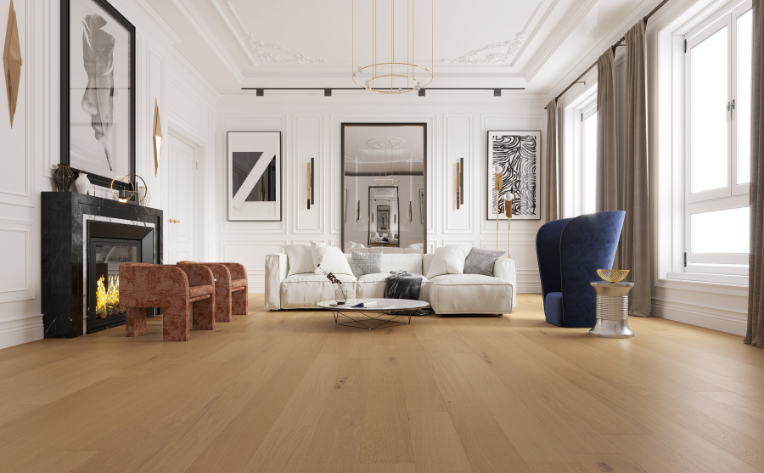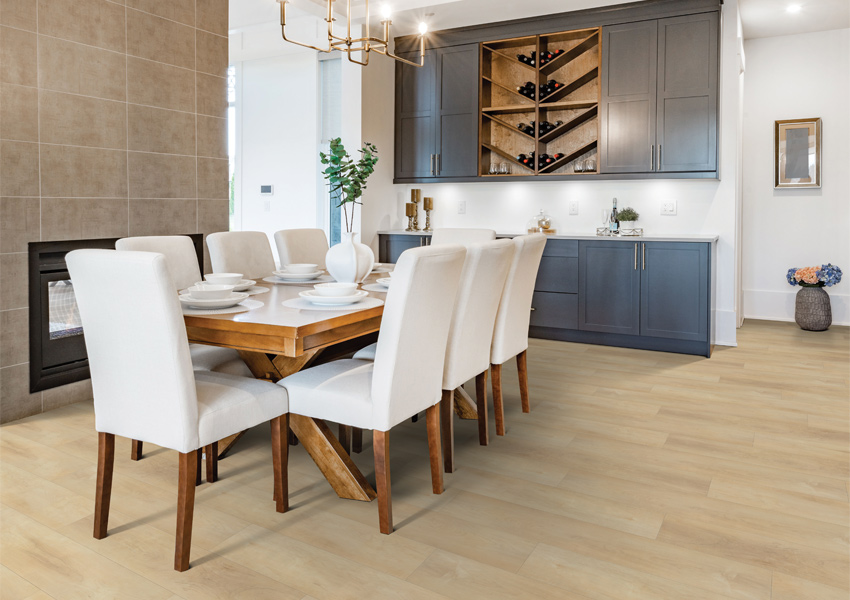Mar 12, 2025 | Flooring Canada

Choosing the right flooring for your home is an important step in creating a space that feels both beautiful and practical. Every room has its own needs—while living rooms and bedrooms give you room to play, spaces like bathrooms and kitchens need something tough enough to handle water and busy foot traffic. Whether you’re sprucing up your home or starting fresh, keeping up with the latest flooring styles and practical options can help you find that sweet spot between looks and everyday durability.
From the timeless warmth of hardwood to the cozy feel of carpet or the practicality of tile, laminate, and luxury vinyl, today’s flooring options are designed to bring comfort, style, and long-lasting quality to your home. Let’s find the perfect fit for your space together!
Finding the right flooring for your home isn’t just about following trends—it’s about choosing something that fits your life. For families with kids or pets, durability and water resistance are a must. Options like waterproof vinyl, hardwood, or tile can handle everyday messes—spills, splashes, and all—with ease while still looking great. If comfort is more your thing, soft choices like carpet or luxury vinyl bring that cozy feel without compromising on durability.
Every room in your home has its own needs. Living rooms and bedrooms give you plenty of freedom to play with design, but high-traffic spots like kitchens and bathrooms call for tough, water-resistant flooring that can stand up to daily life. At the end of the day, it’s about finding flooring that works for your family and your home, creating a space that’s not just beautiful but truly livable. We’re here to help you every step of the way.

Hardwood flooring has always been a favourite for homeowners—and it’s easy to see why. Its timeless beauty, durability, and versatility make it a natural choice for creating a warm and inviting home. Whether you’re hosting family gatherings or just enjoying a quiet night in, hardwood floors add a touch of elegance that stands the test of time.
Hardwood flooring isn’t just about looks—it’s about creating a home that feels comfortable, welcoming, and ready for life’s everyday moments. If you’re thinking about upgrading your floors, we’re here to help every step of the way. Check out our hardwood flooring guide or browse our hardwood flooring selection today. Let’s find the perfect fit for your home together!
Tile flooring is a favourite for many homeowners—and it’s easy to see why. It’s versatile, durable, and incredibly low maintenance, making it a great fit for just about any room in your home. If you’re dreaming of a kitchen or bathroom upgrade, tile is a perfect choice thanks to its waterproof qualities and ability to stand up to everyday life. Plus, it’s easy to clean, so you can spend less time scrubbing and more time enjoying your space. Tile can feel cooler to the touch; adding an electric heated flooring system can make your tiles feel cozy and inviting.
If you’re ready for a refresh, we’re here to help. Check out our full tile selection or dive into our tile guide to learn more. Let’s find the perfect fit for your home together!
Choosing the right flooring for your home can feel overwhelming, but luxury vinyl flooring makes it easy. Manufactured to mimic the realistic look of natural wood and tile, it’s the perfect mix of style and toughness. Whether it’s muddy boots in the entryway or spilled juice in the kitchen, luxury vinyl is designed to handle the hustle and bustle of real life while still looking amazing.
Whatever stage of life you're in—renovating the house you’ve lived in for years or building your dream space—luxury vinyl flooring is a practical, stylish, and worry-free choice. It’s made for real homes and real families, just like yours. Ready to explore? Check out our luxury vinyl collection or dive into our vinyl guide to learn more. We’re here to help you find the perfect fit!
Laminate flooring is a popular choice for homeowners, offering a perfect blend of style and performance. Known for its ability to mimic the natural beauty of materials like hardwood or stone, laminate flooring is a versatile and cost-effective option that fits seamlessly into any home design.
Ready to Upgrade Your Floors? Explore our wide selection of laminate flooring options online today! From traditional wood-look designs to modern finishes, you'll find the perfect match for your home. Need more guidance? Check out our laminate flooring guide for expert tips and advice.
Carpet is a beloved flooring choice for homes. It brings a cozy, welcoming feel to any room while combining comfort, style, and practicality in the best way. Imagine sinking your feet into a soft, warm surface that makes your space feel inviting and family-friendly. Whether your home has a sleek, modern vibe or a more classic, traditional look, carpet is versatile enough to fit right in.
Carpet is more than just flooring—it’s what makes a house feel like home. Check out our carpet collection online and explore our carpet guide for more tips. We’re here to help you create the space you’ll love coming home to.

Eco-friendly flooring is changing the way we think about our homes—bringing together style, sustainability, and a sense of responsibility. Imagine walking into a room that feels warm and inviting, not just because of how it looks, but because you know you’ve made a choice that’s good for the planet. With our range of eco-friendly carpets, you can create a space that’s beautiful, durable, and kind to the environment. These floors aren’t just a trend—they’re a step toward a greener future, designed for real life and the moments that matter most. Let’s build a home you can feel proud of, one step at a time.
Whether you're planning a new home build or updating your current flooring, we’re your trusted local flooring experts, here to make the process simple and stress-free. From helping you weigh the pros and cons of different flooring options to finding the perfect fit for your style and lifestyle, we’re here to guide you every step of the way. Feeling stuck with all the choices out there? Give our Room Visualizer Tool a try—it’s a fun way to see how different styles will look in your space. You can even order flooring samples right from the comfort of your home. Let’s make your flooring dreams a reality—contact us today!